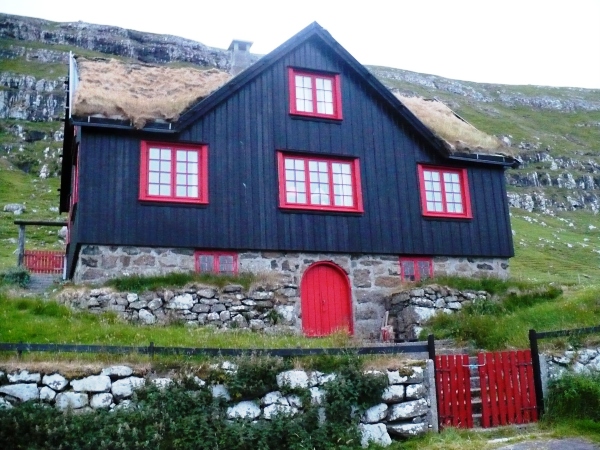The Faroe Islands are frankly exotic. They’re a self-governing Danish territory located about 360 km from Lerwick in the Shetlands, slightly closer to Iceland in the west than Norway in the east. They are hardy, their dramatic, vast landscapes characterised by a relative lack of trees, towering cliffs, and fjord-riven coastlines. The living tongue of the Faroes was apparently mutually intelligible with Norn, an extinct language spoken through the 18th century in the Shetlands and the Orkneys.
The capital Tórshavn is a treat of a town, tiny and pristine. There are little parks and well-stocked supermarkets. Some houses have grass roofs, though the most noticeable quality of the capital is its modernity, and while central artery Niel Finsens gøta feels like the main street of a small provincial Scandinavian town, the presence of some venues of outsize significance – a sushi restaurant, the Nordic House, and the Parliament, to name three – gives the city an edge over the Sønderborgs of the region. Tórshavn has in fact everything that one could want from a Nordic capital on a miniature scale, and beyond the city the infrastructure is outstanding: long tunnels, perfect roads, precise signage.
As appealing as that Nordic modernism is, we hungered for something, some sign of the old Nordic life to temper the city’s contemporary slickness. A young friendly Faroese man raced us through the countryside. He took us to the tiny village of Kirkjubøur in the far southwestern corner of Streymoy, the archipelago’s main island. With its distinctive grass-roofed houses, painted black with red trim, Kirkjubøur felt properly age-old, like a living museum. He later drove us to windy peaks, choked with fog and grey dusk at 11 pm, before delivering us to the Nordic House on the outskirts of Tórshavn.
And it was here, in a back room at the Nordic House, designed in true pan-Nordic solidarity by Icelandic architect Kolbrún Ragnarsdóttir and Norwegian architect Ola Steen, that we encountered living Faroese folk culture.
Outside the sky was still streaked with very late blue sunset. Inside, people shuffled in a loose circle, holding hands. People joined and people left. The tally of dancers trickled and then their ranks swelled. Some rested, sitting between stints in the chain. One person would begin to sing a verse and others would join in, some tentatively and others forcefully. Some sang loudly and others sang softly. They sang verses of the traditional Faroese ballads, the kvæði. There are tens of thousands of these ballads. They vary in meaning and have figured prominently in the development of Faroese culture and national spirit.
The chain dance has its roots in the medieval period. Different variations have been documented in Scandinavia, German-speaking Europe, and the Balkans. In the Faroes the dance has survived through the years, and remains very popular today. Several chain dance associations organise dances.
Even for outsiders without this background, the chain dance is fascinating to witness. It is folklore in action, something for which its participants have a clear hunger. It is thus differentiated from so many other contemporary demonstrations of traditional European culture, which feel more or less as if they are performed by people going through the motions of tradition.
Alex Robertson Textor is a London-based travel writer and editor keen on high-value independent travel, remote Europe, and beautiful little islands.
Visit our site for more about holidays in the Faroe Islands, including a 7 night itinerary that takes in Streymoy as well as the island of Eysturoy.





